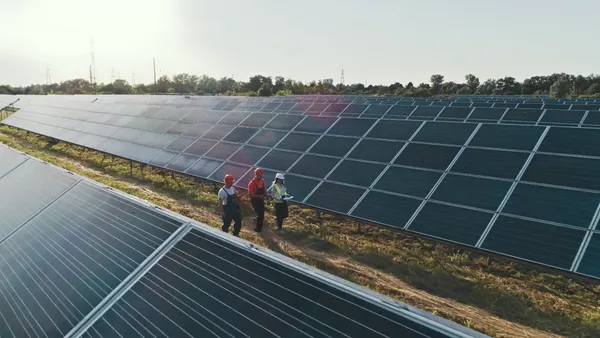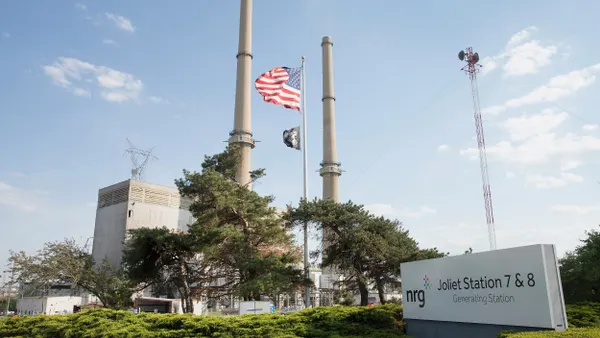The Northeast power grid should be stable this winter, but electric generators and transmission operators remain wary as demand centers begin to experience winter temperatures in earnest.
That's the high level view — that last year's polar vortex was an extreme weather event which many meteorologists do not expect to repeat this year. Very cold temperatures spiked demand and stalled fuel deliveries a year ago, but gas pipeline expansions mean the region is now better prepared for the season ahead. Extreme cold, however, could push both the gas and power networks to the edge of their capabilities.
"Prolonged and extreme cold weather in parts of North America may cause an increase in generator unavailability due to natural gas and coal constraints," said the North American Electric Reliability Corp.
In New York, ISO President and CEO Stephen Whitley said, "We continue to work with our regulators and stakeholders on fuel assurance initiatives, operational measures and potential improvements to our market design that will address the growing reliance on natural gas and strengthen grid reliability and market efficiency."
Utilities will meet demand, Whitley said, but prices may rise in the process, and an extended bout of cold weather could pose challenges to major urban demand centers. Already, the EIA has boosted its short term natural gas demand forecast after an unseasonably cold November across the country.
Gas pipeline expansions
In the PJM territory, about a third of generation is gas-fired. But perhaps more importantly, while coal represents 40% of generation power companies moving quickly to retire their coal plants and replace them with gas, due to low gas prices and upcoming emissions regulations. While coal made up almost 45% of total PJM capacity in 2013, it is forecasted to fall to under 22% of capacity in 2018. Natural gas, meanwhile, is forecasted to increase from about 30% of capacity to more than 45%.
“We’re facing a big change from the normal pace at which the grid evolved," PJM Interconnection President and CEO Terry Boston said. "Looking back 80 years, typically it has taken a decade for a new fuel to emerge as a major source of generation."
Last year's cold weather locked up coal deliveries and froze gas pipelines. An analysis of the forced outages by primary fuel type revealed gas-fired generators accounted for 47% of the offline power and coal accounted for 34%, as plants had to deal with frozen equipment, fuel delivery issues, frozen coal and failing emissions equipment.
But a rapid push has expanded gas transportation by 2 Bcf/d of capacity in the region, and another 400 MMcf/d is scheduled to be online by the end of the year.
Texas Eastern Transmission brought its TEAM expansion online in October, expanding the system with looping and new compressor stations. The expansion will enable the system to transport an additional 0.6 Bcf/d of natural gas from western Pennsylvania and West Virginia to market areas in New Jersey, New York, and Ohio.
Columbia Gas' West Side Expansion Project (Smithfield III) was completed in October enabling the company to flow 0.44 Bcf/d of gas from the Waynesburg, Pa., and Smithfield, W. Va., areas to Leach, Ky. From there, the gas will be transported to the Gulf Coast on the Columbia Gulf Transmission pipeline.
And the Seneca lateral reversal project was completed in June, enabling the Rockies Express Pipeline to flow 0.25 Bcf/d of gas west to points in Ohio, Indiana, and Illinois.
Urban demand centers
In New York, grid officials say they can meet demand without too much worry — absent extreme spikes.
The ISO said it anticipates a peak load demand of 24,737 MW for the winter season — below last winter’s peak, when polar vortex conditions surged load to 25,738 MW in January. If extreme weather produces colder conditions, with temperatures in the 5-6 degree Fahrenheit range, peak demand across the state could increase to approximately 26,300 MW, the ISO said.
Installed generation capacity in New York state this winter amounts to 39,803 MW, and net external capacity purchases of 1,078 MW also have been secured for the winter period. Combined with the 843 MW of projected demand response in the special case resources program, the total capacity resources equal 41,724 MW.
“For the 2014-2015 winter season, the NYISO has added expanded visualization of the natural gas system so grid operators can see more clearly the status of the pipeline system,” the operator said. “New gas infrastructure serving the downstate region also is expected to help improve generators’ access to fuel sources.”
In New York City, however, the situation is a little tighter.
“Because of the pipeline constraints which haven't expanded too much into the actual city, New York City will remain constrained in extreme cold weather,” said Jordan Grimes, a senior analyst with Morningstar.
The city has a total gas supply of 4,364 MMBtu/d, and approximately 3,279 MMcf/day of the capacity has firm gas contracts into the city, with the remaining capacity for interruptible gas generators and incremental local distribution company demand. A stretch of two to three weeks of sustained cold weather, where the region would be forced to burn through lliquefied natural gas reserves, could have NYC running at a 632 MMcf/d defecit.
That could leave the city's power grid starved, but Grimes said New York City can "import from upstate New York and PJM and New England."
In Boston, the U.S Energy Information Administration believes forward gas prices will run $13.70/MMBtu or about $2.33/MMBtu lower than the winter of 2013-14, "but much higher than previous winters."
"Higher natural gas prices are partly because the pipeline industry has not added any new capacity to flow more Marcellus gas into Boston and because production from eastern Canada and liquefied natural gas from the Everett (Boston) and Canaport (New Brunswick) terminals are not high enough to serve New England peak demand," EIA said.
In PJM, which serves 61 million people and includes the Mid-Atlantic and parts of the northeast, the operator said it is prepared to meet power demand in a normal weather scenario. "Extreme weather can affect unit performance during the winter as was experienced last winter," NERC said in an assessment of winter reliability. "If normal weather is assumed, no significant generator unavailability is expected. No other issues are expected to affect generator unavailability."














